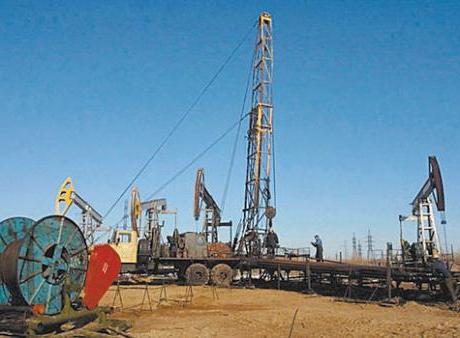The first written evidence of how oil was produced in Russia dates back to the 16th century. And already in 1745, the first oil refinery was built on the Ukhta River . The growing demand for a new type of fuel forced the tsarist government to send geological exploration expeditions to the Caucasus. The results were not long in coming. So, in 1823, an oil refinery appeared in the city of Mozdok, and in 1846, the first well in the world scored in Baku. Thus began oil production in Russia. Statistics say that by 1900, our country was producing a third of the world market of "black gold".

The revolution that began in 1917 and then the civil war led to the decline of the once powerful empire. But after 6 years, oil production in Russia was completely restored, and the country has already reached a pre-revolutionary level in terms of exported “black gold”. Until the start of World War II, oil reserves were studied in the Caucasus region. During World War II, Hitler sought at all costs to seize the wealth of this region.
After the victory of the USSR over Germany, a decision was made to begin geological exploration in the Volga-Ural region. Oil production in Russia gradually moved from the eastern regions to the Urals. The presence of a relatively well-developed transport network, full-flowing rivers and ease of development of new fields led to a collapse in Middle East oil prices. The Volga-Ural region provided about 45% of all production in the USSR. By 1975, it had peaked at 4.5 million barrels / day.
The depletion
of oil reserves in the Urals led to a more thorough development of
Western Siberia. Large deposits discovered in the 1960s began to be actively developed. Thousands of Soviet citizens changed the climate of central Russia to a harsh Siberian winter. Cities and towns began to grow and develop rapidly. The rapid growth of oil producing regions has allowed to increase the volume of extracted "black gold" to 9.900 thousand barrels / day. Nowadays, the Khanty-Mansi Autonomous Okrug remains the leader in oil production. After all, about 60% of all Russian "black gold" is mined there. The first oil in Western Siberia was extracted by barbaric methods. They tried to compensate for the lack of exploration by more intensive drilling, which ultimately led to the rapid depletion of wells and a decrease in
production volumes.The collapse of the USSR led to the fact that oil production in Russia fell to such limits that the country could provide only for itself, there was nothing left for export. The privatization led to the creation of large oil companies. For many years now, Gazprom, Rosneft, Lukoil and TNK-BP have held the lead among them. The main oil and gas production in Russia is carried out by these giants.
Most oil companies are currently focused on the development of technologies that can increase the level of oil production in the already developed regions. Modern automation and new drilling methods lead to the fact that oil and gas production in Russia is only increasing. The total volume of proven reserves of black gold increased by 5-15% due to the modernization of production. New government programs aimed at developing the Far East and Eastern Siberia are already bearing fruit. Thanks to them, oil production in Russia continues to grow and exceeded 171 million tons.